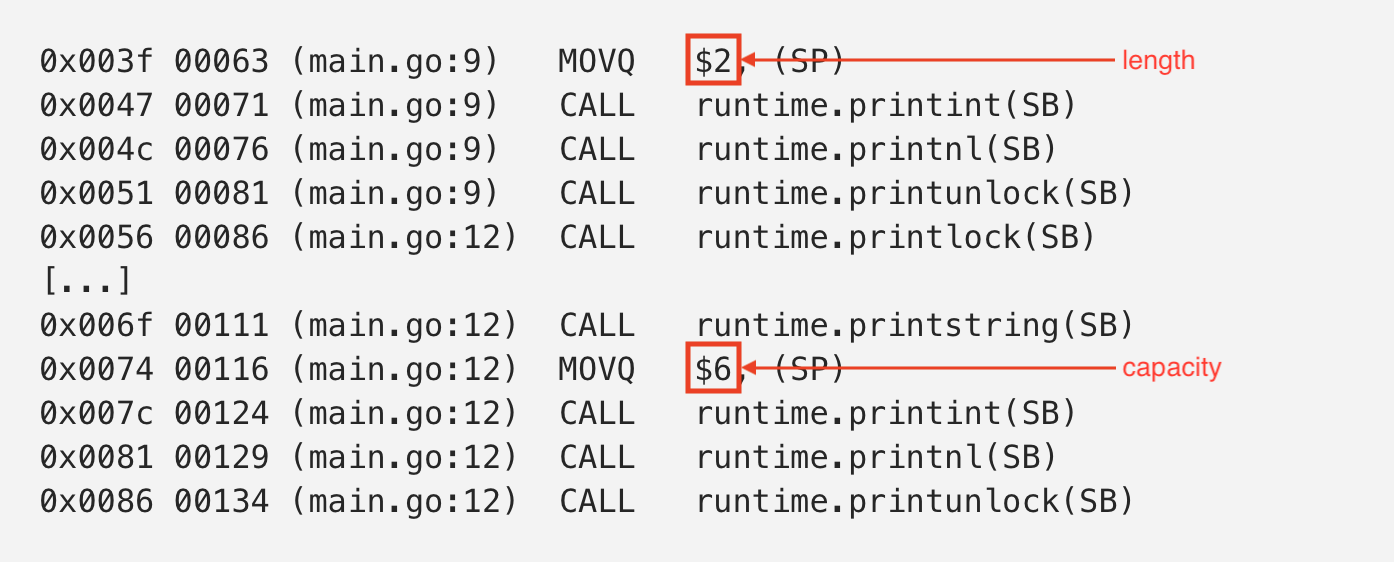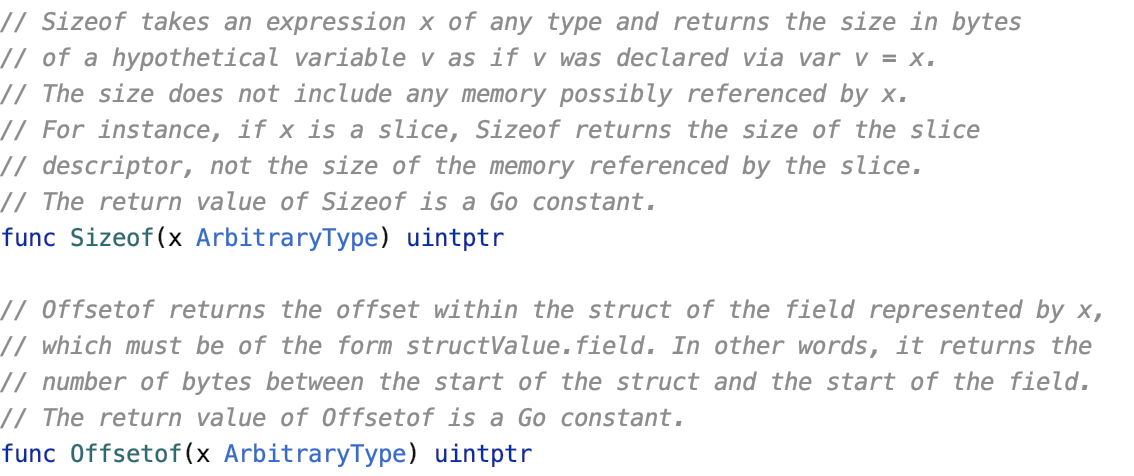
ℹ️ 这篇文章基于 Go 1.13。
Go 语言提供内置函数来辅助开发者处理 channel,slice,或者 map。一些内置函数有着像样的内部实现,比如 `make()`,而有的内置函数完全没有实现,而是由编译器所管理。让我们一起分析一些内置函数,来理解 Go 如何处理它们。
## Slices
如果可以事先知道的话,Go 有时可以把一个在运行时完成的函数调用替换为它的结果。来看一个使用切片的例子:
```go
func main() {
s := make([]int, 0, 6)
s = append(s, 12)
s = append(s, 34)
l := len(s)
println("the length is ", l)
c := cap(s)
println("the capacity is ", c)
}
```
函数 `len` 和 `cap` 实际上没有具体实现。编译器能够跟踪在切片上所做的更改,并将长度或者容量函数替换为可以代表它们的常量。这是[汇编](https://golang.org/doc/asm)代码表示:

但是,编译器不可能永远确定切片的大小。在这种情况下,比如,切片是一个函数的参数,这个函数没有指定其大小。这是一个例子:
```go
func main() {
s := make([]int, 0, 6)
s = append(s, 12, 34)
getLength(s)
}
//go:noinline
func getLength(s []int) {
l := len(s)
println("the length is", l)
}
```
这是生成的指令:

由于 Go 无法了解 `getLength()` 方法被如何使用,只能直接从内存里面读取切片的长度。同样的行为也会引用在切片的容量上。
*Go 通常会指向切片的长度,防止不良的内存访问,比如越界读取。更多信息,建议阅读我的文章“[Go:边界检查保证内存安全](https://studygolang.com/articles/28456)”。*
## Unsafe
`unsafe` 包同样暴露了没有任何实现的函数。由 Go 标准库提供的定义原型,仅仅用作说明文档:

这是这个包的例子:
```go
type T1 struct {
a int64
b bool
}
func main() {
t1 := T1{}
println("size of the struct:", unsafe.Sizeof(t1))
println("alignment of the struct:", unsafe.Alignof(t1))
}
Output:
size of the struct: 16
alignment of the struct: 8
```
再次,编译器有着关于结构的足够信息,可以直接将值写为常量:

*Go 语言提供了更多的内置函数,比如 `make` 或 `copy`。关于 `copy` 函数的更多细节信息,建议阅读我的文章“Go:切片以及内存管理”,该文章详细阐述了优化细节。关于在 map 上的优化,建议阅读“[Go:根据代码设计 map——第二部分](https://medium.com/a-journey-with-go/go-map-design-by-code-part-ii-50d111557c08)” 来深入了解。*
via: https://medium.com/a-journey-with-go/go-built-in-functions-optimizations-70c5abb3a680
作者:Vincent Blanchon 译者:dust347 校对:polaris1119
本文由 GCTT 原创翻译,Go语言中文网 首发。也想加入译者行列,为开源做一些自己的贡献么?欢迎加入 GCTT!
翻译工作和译文发表仅用于学习和交流目的,翻译工作遵照 CC-BY-NC-SA 协议规定,如果我们的工作有侵犯到您的权益,请及时联系我们。
欢迎遵照 CC-BY-NC-SA 协议规定 转载,敬请在正文中标注并保留原文/译文链接和作者/译者等信息。
文章仅代表作者的知识和看法,如有不同观点,请楼下排队吐槽
有疑问加站长微信联系(非本文作者))






